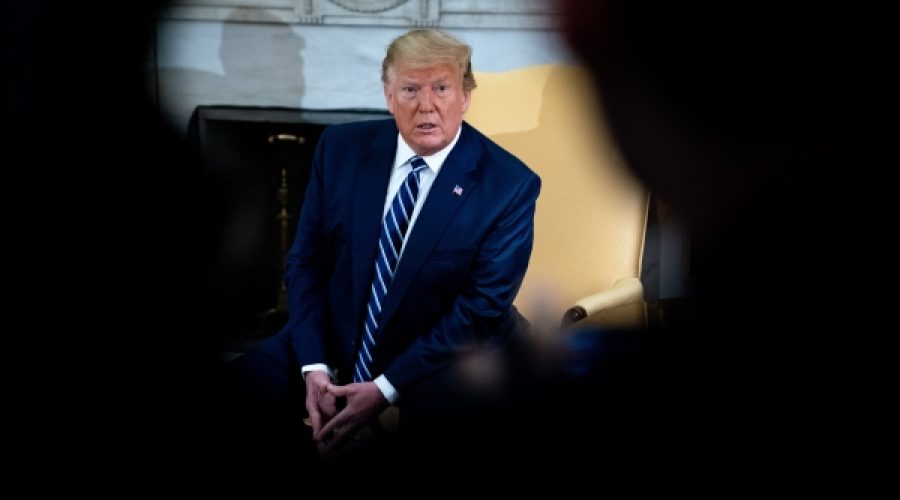Impact of Trump’s Trade War on Global Economy: Key Insights for Investors and Business Owners in Oman
U.S. Tariff Developments Under President Donald Trump: A Timeline
Since taking office on January 20, U.S. President Donald Trump’s tariff decisions have disrupted financial markets and created significant uncertainty in the global economy. Below is a timeline highlighting the key events:
-
February 1: Trump imposes a 25% tariff on imports from Mexico and Canada, alongside a 10% tariff on Chinese goods, arguing for measures to reduce the flow of fentanyl and illegal immigration into the United States.
-
February 3: The president suspends the threat of tariffs on Mexico and Canada, agreeing to a 30-day moratorium in exchange for commitments related to border security and crime enforcement. A similar deal with China fails to materialize.
-
February 7: Tariffs on low-cost packages from China are delayed until the Commerce Department can establish adequate procedures for processing and revenue collection.
-
February 10: Tariffs on steel and aluminum are increased to a flat 25%, with no exceptions.
-
March 3: Trump announces that the 25% tariffs on Mexican and Canadian goods will take effect as of March 4, and he doubles the fentanyl-related tariffs on Chinese imports to 20%.
-
March 5: Following discussions with executives from General Motors and Ford, Trump agrees to delay vehicle tariffs on Canada and Mexico for one month.
-
March 6: He grants a one-month exemption from the 25% tariffs for products from Canada and Mexico under the North American trade agreement.
-
March 26: Trump reveals plans for a 25% tariff on imported cars and light trucks.
-
April 2: He announces global tariffs, setting a baseline of 10% across all imports, with significantly higher rates for major trading partners.
-
April 9: In response to significant financial market upheaval, Trump pauses several country-specific tariffs for 90 days but maintains the 10% blanket duty on most U.S. imports. He proposes raising the tariff on Chinese goods to 125%.
-
April 13: The administration grants exclusions from steep tariffs on electronics, including smartphones.
-
April 22: The Trump administration initiates national security investigations under Section 232 of the Trade Act concerning pharmaceutical and semiconductor imports, potentially leading to tariffs.
-
May 4: Trump imposes a 100% tariff on all films produced outside the U.S.
-
May 9: Trump and British Prime Minister Keir Starmer announce a limited bilateral trade agreement, maintaining 10% tariffs on British exports, while improving agricultural access.
-
May 12: The U.S. and China agree to a temporary reduction of reciprocal tariffs, aiming for a 90-day truce that lowers U.S. tariffs on Chinese imports to 30%.
-
May 13: The U.S. reduces the low value "de minimis" tariff on Chinese shipments valued up to $800, decreasing it from 120% to 54%.
-
May 23: Trump suggests a 50% tariff on European Union goods starting June 1 and warns Apple of a 25% tariff on phones manufactured outside the U.S.
-
May 25: The president retracts the proposed 50% tariffs on EU imports, extending the negotiation deadline to July 9.
-
May 28: A U.S. trade court blocks the tariffs, ruling that Trump overstepped his authority. The administration plans to appeal.
-
May 29: A federal appeals court temporarily reinstates Trump’s tariffs, pausing the previous ruling while considering the government’s appeal.
-
June 3: Trump issues an executive proclamation to raise tariffs on imported steel and aluminum to 50%.
-
June 12: He signals potential auto tariff increases during a White House event, suggesting this could encourage domestic investments.
-
July 3: Trump announces a 20% tariff on many exports from Vietnam, with a 40% levy on products transshipped through other countries.
-
July 6: On Truth Social, he mentions countries that align with the “anti-American policies” of BRICS will incur an additional 10% tariff.
-
July 7: Trump states that previously announced higher duties will be implemented with a delay, starting August 1, while trade agreements are finalized.
- July 8: He declares plans to impose a 50% tariff on imported copper and intends to introduce levies on semiconductors and pharmaceuticals soon.
Special Analysis by Omanet | Navigate Oman’s Market
The recent shifts in U.S. tariff policies create both opportunities and risks for businesses in Oman. With heightened import duties, Omani exporters may gain a competitive edge in markets affected by these tariffs, presenting a chance to capitalize on new demand. However, uncertainty in global trade dynamics may pose challenges, urging investors and entrepreneurs to strategically assess their supply chains and market entry strategies to mitigate potential disruptions.



